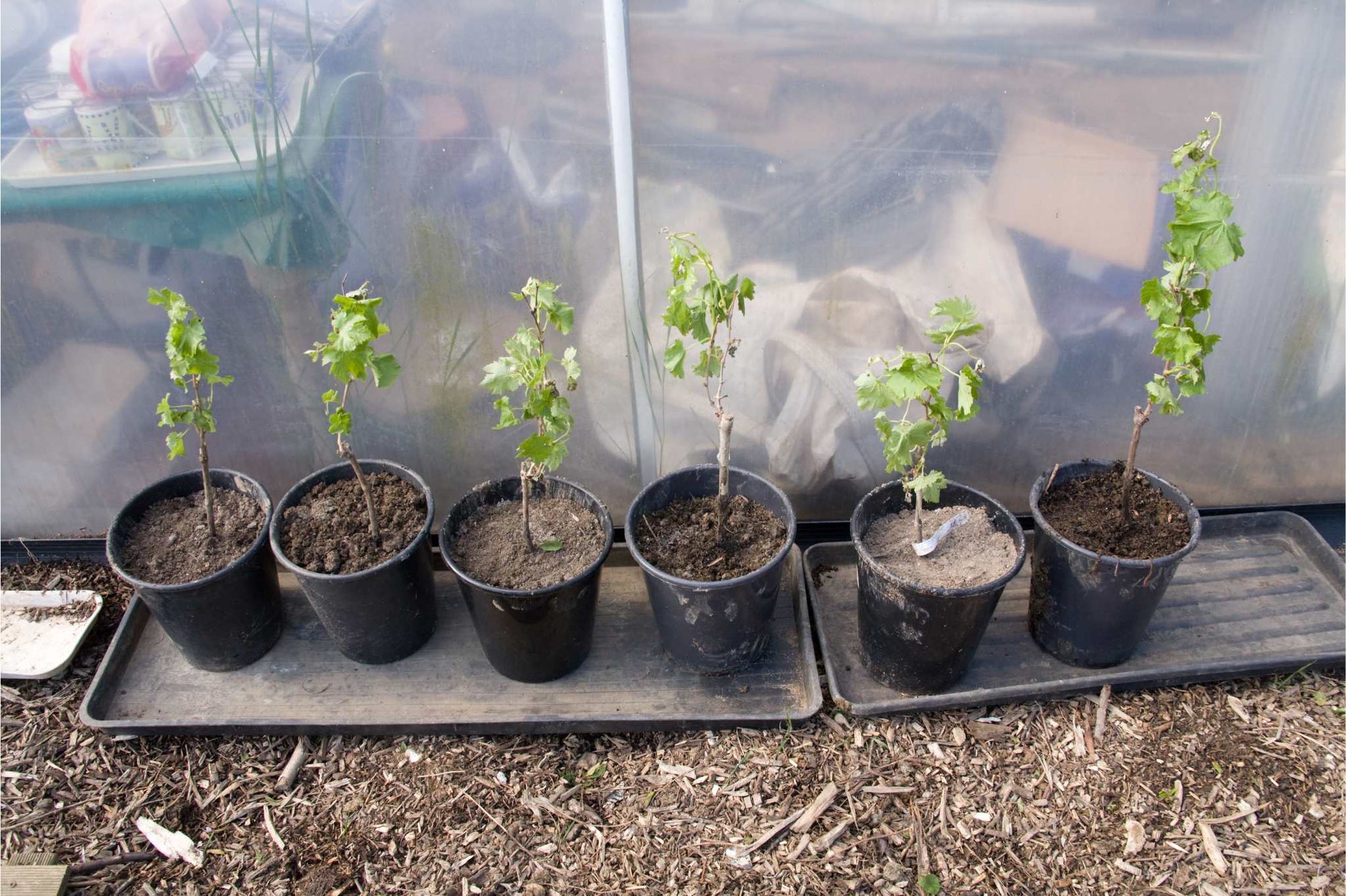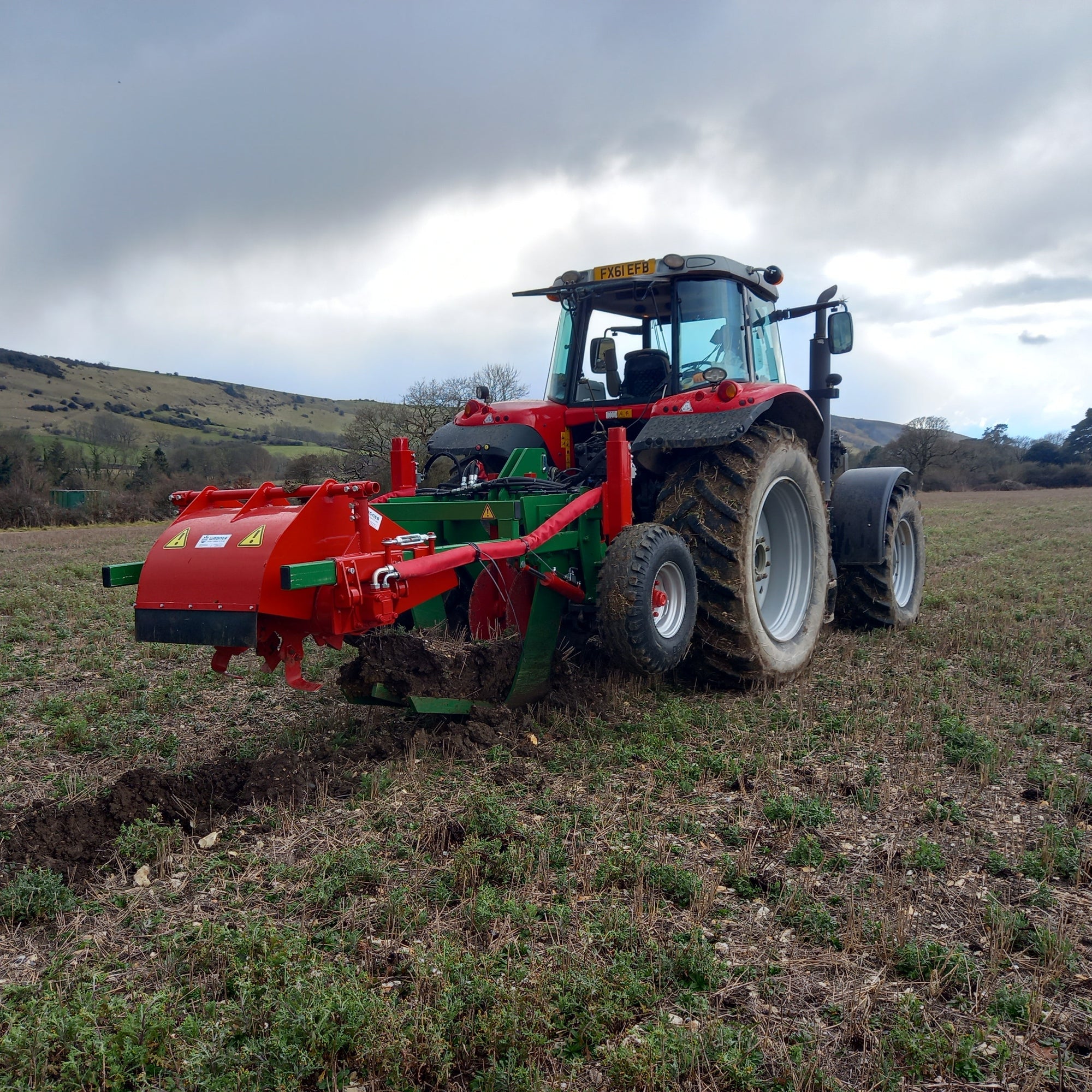

Using Potted Vines for Infilling in Established Vineyards
What is Infilling?
Infilling in vineyards is an annual vineyard task where the dead, sick or broken vines are replaced within established rows. This task usually starts at the end of the preceding season, when the number of vines that are identified for replacement are counted, recording important information such as variety, clone/rootstock combination. These are then collated and an order is placed with the vine nursery or approved UK grapevine supplier.
Traditionally, these vines are delivered as dormant bare root plants in the spring of the following year. These arrive as dormant plants, direct from the cold store, with little or no soil and must be planted very soon after delivery, or go back into cold storage until required.
While bare root vines remain the conventional choice for infilling, potted vines are an increasingly viable alternative. These container-grown vines come with a fully developed root system and offer significant advantages, particularly when it comes to timing and ease of establishment.
Benefits of Using Potted Vines for Infilling
One of the great advantages of potted vines is their flexibility in planting time. Unlike bare rooted vines, which must be planted during the spring, potted vines can be planted throughout the growing season. This allows vineyard managers to carry out infilling when it best suits their workload and other vineyard operations. Spring is typically a busy period, as vines begin growing and key tractor operations, such as mowing and spraying, recommence. Being able to delay or stagger infill planting means that resources - especially labour - can be deployed more efficiently, without being tied to nursery delivery schedules.
Another key benefit of potted vines is their established root system. These vines are grown in pots long enough to develop a healthy, fibrous root structure. When planted out, they typically experience less transplant shock and can begin establishing themselves more rapidly than bare root alternatives. This is especially advantageous in vineyards where quick integration into the existing canopy is critical for maintaining yield and vine balance.
How to Plant Potted Vines
Planting potted vines follows a similar process to planting bare root vines, with a few key considerations. First, ensure that vines are planted to the depth of the root system or the height of the pot - this helps prevent issues like shallow planting or J-rooting, where roots bend upward rather than growing out.
The aperture of the hole should be twice as wide as the root ball of the vine to loosen the surrounding soil and give roots space to spread, encouraging quicker and better establishment. Finally, watering is essential. After placing the vine in the hole and backfilling the dug out soil, water the vine thoroughly. This will help settle soil around the roots and remove any air pockets that might hinder root-to-soil contact, whilst also providing some initial moisture for the vine to grow.
Final Thoughts
Potted vines present a practical, flexible alternative for infilling in established vineyards. Their longer planting window, reduced transplant shock, and quicker establishment can significantly streamline vineyard management, especially during busy periods. While they may not replace bare root vines in every scenario, they are a valuable option that can offer real efficiencies.
At VineWorks, we are always looking for ways to help vineyard managers and workers find the most effective and efficient methods for managing their sites - one vine at a time.
PUBLISHED IN VINEYARD MAGAZINE - AUGUST 2025
Photo caption: Grape vines potted growing in a polytunnel, Hampshire (c) Edward Westmacott



